Don’t nobody bring me no “Bad News.”
All one has to do is scan Twitter on any day to see horrendous stories about the flaws and tragedies occurring in many public schools across the country. Yeah, there are a lot of bad schools out there, enough to fill the twitter feed of anyone that wants to document the crisis in public education (traditional district or charter). But what is not often promoted, reported or discussed are those schools and educators that have taken on the challenges and are making a real positive impact on the lives of their students, especially those that are Black and Brown.

The number of sideline commentators, researchers and edu-celebs is growing daily. But mere talk about loving and speaking for children of color without some “receipts,” in some form, lessens the persuasiveness of even the most impassioned arguments. Working with true intention in an urban school is tough work. That is clear to any observer. Those that claim they are focused on changing the trajectory of education for children of color across this country should try to better understand the day-to-day lives of educators (both good and bad).
There is no Silver Bullet – But there are proven tools.
There are enough voices out here making claims about their latest silver bullet that will fix all school ills. Many are supported by their funders pushing a “Theory of Change” to an audience eager for quick fixes to decades old institutional problems. The sound-bite addiction of American culture, circa 2019, does not provide many platforms for real dialogue, debate and understanding. As example, claims about the benefits of segregation or integration, that on the surface seem easy enough to understand. But are pitched with such bias and skewed research as to intentionally confuse even those eager to know the truth. And please no more “Ed Tech” reps hawking their wares as the next silver bullet to unsuspecting and oft naive school tech folks trying to be up with the latest, falling for promises of immediate gains that they say require no culture change in the building, until these vendors start to up-sell their training programs.
In the past few years, as advisor to one of the best charter schools in Massachusetts, I have come to many conclusions about school success. But the headline is – success seems to be driven by skilled innovative leadership, autonomy of action and laser like focus on student well being and outcomes.
Easy for me to say, but much harder to define or find. These characteristics are very rare, especially in schools where the majority of students are lower income Black or Brown.
The crisis in public education is reflective of the broader crisis of leadership and calcified entrenched protected bureaucracies that exists in so many areas of government. My “currency” in this dialogue is years of collected data, quantitative analysis, on-the-ground observation, exposure to daily school experience, many conversations with school leaders, participation in successful turn-arounds and most importantly many decades of relevant “lived experience.”
Data on a little school that could and did.
Thanks to School Digger web site for posting the most recent school results. Let’s get to the data!
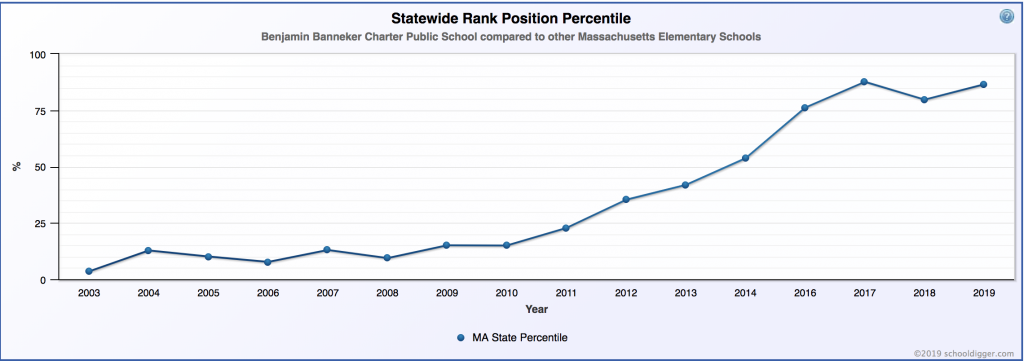
Benjamin Banneker Charter Public School (BBCPS) is a small school community in Massachusetts that I have been able to observe, document and study for the past 3 years. The educators in this school are among the best I have been exposed to. The leader is laser focused on what is best for her community, which includes:
- student academic outcomes and a favorable student school experience;
- staff culture, high expectations, ongoing professional development and retention;
- parental pride and engagement in the academic life of their children.

The school has and continues to serve mostly Black and Brown students from Cambridge, Boston and surrounding towns. Named after a self educated Black scholar from the 1700s, Benjamin Banneker opened in 1996 by community leaders of color, parents, and those concerned with bringing equity to education in a state known today for very wide and persistent achievement gaps. Massachusetts is one of the top performing states in the country when looking at educational outcomes for public school students. But that success is not equally shared by Black and Brown students that fall far behind their White and Asian counterparts. But Banneker demonstrates not only what is possible, but what should be available for many children of color across the state.
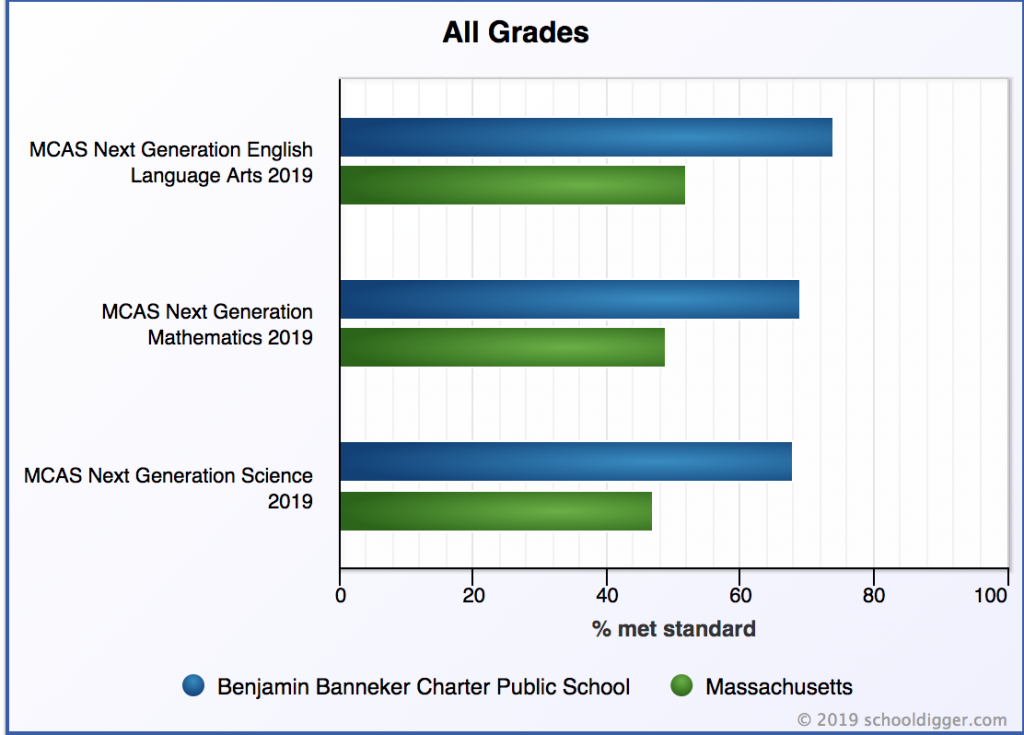
Moving Beyond Diversity to Inclusive.
When a small school community is able to turn itself around and deliver solid results for all constituencies, you have to look at leadership. Institutional culture change is a tough job. Creating a culture of high expectations, accountability and measurable achievement is even tougher, especially in schools where students of color are in the majority. Some might call Banneker a segregated school, as its students are majority Black. But I have found that even that racial label hides the rich cultural differences of the many regions represented in the Banneker community. Plus the school opens its doors to all, advertising their successes to diverse communities encouraging them to apply. For many families in the area, the very inclusive and welcoming culture created by the leadership and staff, combined with academic results that are outstanding, make Banneker an easy choice over other options.
For others there are obvious reasons it is not on their list of choices for their children. The Cambridge school district has a few good public school options where Black and Brown students are still falling behind their peers. Banneker boasts much higher than state average student outcomes, an engaged parent community and a healthy wait list.
The instructional staff is beyond diverse. It is “inclusive” in a manner that goes well beyond the shallow and insincere diversity statements often made, as a matter of course, by even the most culturally incompetent school leaders jumping on the diversity band wagon. Many languages are spoken at the school and multi-lingual staff are welcomed and encouraged. The staff share their hobbies and culture with an eager student population that has become accustomed to everything from camping to videography to dance along with a very rigorous academic program that produces outstanding writers and mathematicians that score in the top tier of their state.
Students can also “see themselves” and others in the mixed race staff. Banneker prides itself on the culture it has created which is “safe” for all.
Discussions about race, gender, culture and the “mosaic” of unique personalities that make up the staff are often heard, laughingly, throughout the building. For newcomers the culture of openness and cultural safety is welcomed, as it is rare to find this easiness in many schools in the state. Recruiting staff of color has been made easier by the school’s reputation for student outcomes and its “safety” for Black and Brown staff.
Many of the educators in this community, take great pride in the success of their students and are highly motivated to transfer their “lived experience” and the knowledge needed on how to be a success in a world where race is undeniably used to stifle growth and family background is too often predictive of school outcomes and lifelong success. Passing on a culture of achievement from an elder generation to the students is one of Banneker’s unique characteristics when compared to other schools across the state.
From STEM School to STEAMS School.
(Science-Technology-Enginnering-Art-Math-Social Studies)

Even with the well documented academic outcomes of this STEM (Science-Technology-Engineering-Math) school, Banneker’s students are broadly and regularly exposed to music, dance and a variety of art forms. Students know they can become artists if so inclined. Musicians, if they are determined. Dancers, if they can maintain their academic standing and adhere to the tough rules of the Banneker Beats dance troupe. But every student gets their 5 minutes of fame in front of the school community in the many concerts and performances they participate in.
Innovative School Leader of Color.
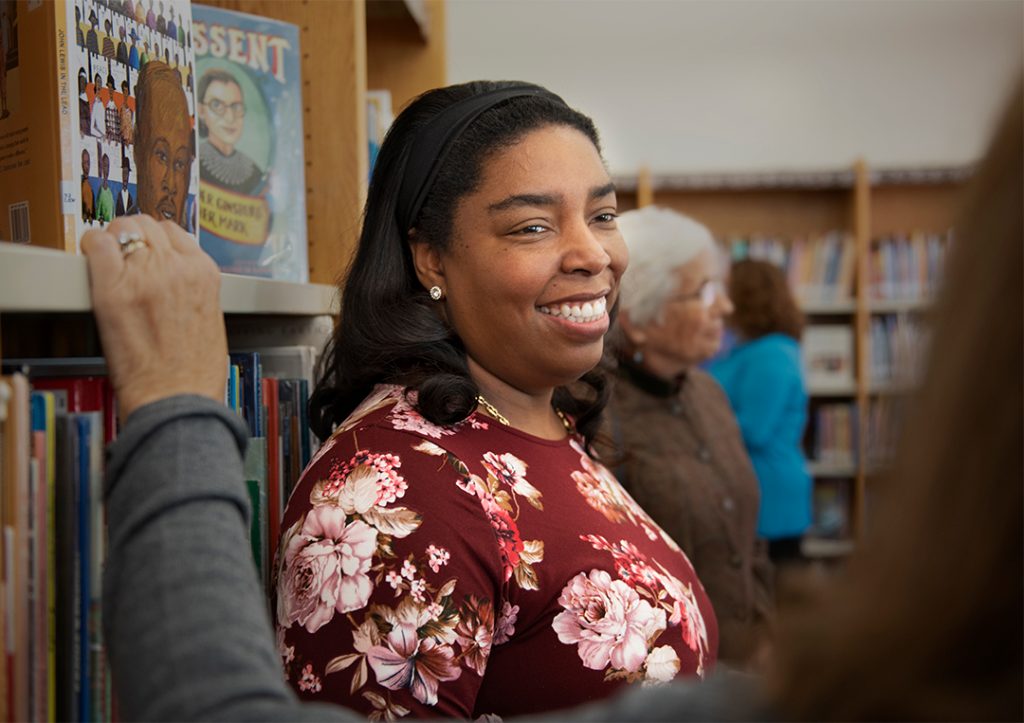
By almost any measure, the Benjamin Banneker Charter Public School is a winner, a unicorn in its state, prize winner for innovation and an example of a great school. However by no means should Banneker be considered as a whole school model easily replicated by other school leaders. The culture of the school is very unique. The successful weaving of very unique personalities, the long tenure of staff and the laser like focus on students is not so easy to package and stamp out in building after building like a Starbucks or other franchise. And Banneker’s Executive Director, Sherley Bretous, does not have either the ambition or arrogance to assume that they have found the successful model that can work elsewhere.
This PreK-6 elementary school, located in the northern section of Cambridge, may have struggled in the past, but has most recently received recognition for its turn-around and its achievements. Now Banneker is setting out on a new path for even greater growth for the staff and students.
Originally from New York, Ms. Bretous is unusual as a school leader in Massachusetts. As a Black female educator, turned school leader, she is also a unicorn. In Massachusetts, Black public school students are only 9% of the student population and Black School leaders or teachers of color are generally rare. Even in districts with overwhelmingly Black or Latino students. Ms. Bretous has been at Banneker for more than 22 years and has been Executive Director since 2011-2012.
When asked about Banneker’s recent successes, Ms. Bretous, smiled, looked around the room at her leadership team and simply said; “Watch where we are headed from here. We’re going from good to great. We will do whatever it takes to make sure our students have what they need for future success. That obviously includes academic excellence. But it also includes self esteem, respect for themselves, respect for others, an awareness of the world around them and a deep sense of the cultural richness of their ancestry.”
Banneker students placed within the top 10% when compared to ALL students across Massachusetts on their ELA and math outcomes for 2019. In a state with very large gaps in outcomes for Black and Latino students, Banneker stands out, setting the high bar as to what is possible for students of color and what should be the expected outcome for so many other families across the Commonwealth.
Banneker is a free standing single site charter neighborhood school started decades back by a community that fought for better educational options for families. Although the staff have long tenures averaging 8 or more years, there are many that have been working at the school since its inception. Massachusetts does not authorize for-profit charter networks, so Banneker is held accountable for results in both academics and operations by a professional oversight team within the State’s Department of Education that reports directly to the Commissioner of Education, who oversees ALL public schools (traditional and charter).
One Successful School Does NOT create a model for other schools.
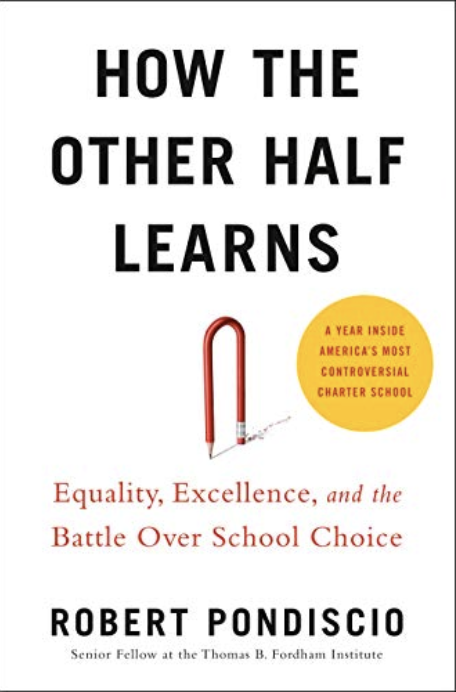 There are other successful school models for Black and Brown children. In a recent book entitled, “How the Other Half Learns,” Robert Pondiscio, of the Fordham Institute, describes the culture and successes at one Bronx charter school in the controversial but successful Success Academy charter network of New York City. But Pondiscio’s description of the school culture he studied is very different from what has been observed during 3 years embedded at Banneker, demonstrating that there are more than one proven school model capable of delivering on the promise of a good education for children of color. Another reason that parents should have options to choose the school environment that would work best for their children.
There are other successful school models for Black and Brown children. In a recent book entitled, “How the Other Half Learns,” Robert Pondiscio, of the Fordham Institute, describes the culture and successes at one Bronx charter school in the controversial but successful Success Academy charter network of New York City. But Pondiscio’s description of the school culture he studied is very different from what has been observed during 3 years embedded at Banneker, demonstrating that there are more than one proven school model capable of delivering on the promise of a good education for children of color. Another reason that parents should have options to choose the school environment that would work best for their children.
Meet the Executive Director.
Effective school leadership needs to be innovative and inspired. They have to create cultures of achievement and high expectations for students staff and parents. Meet the Executive Director of Benjamin Banneker Charter Public School, Sherley Bretous, as she welcomes students, parents and staff for the 2019-2020 school year.
Banneker is one of the best charter schools in Massachusetts, operating in an environment of strong accountability, rigorous state oversight of the charter sector and very high academic standards. The Banneker community of educators deliver the “receipts” for its students and families.
Congratulations and best of luck to Benjamin Banneker for 2019-2020.
Banneker has been a client of Ed Inquiry for the past 3 years.

